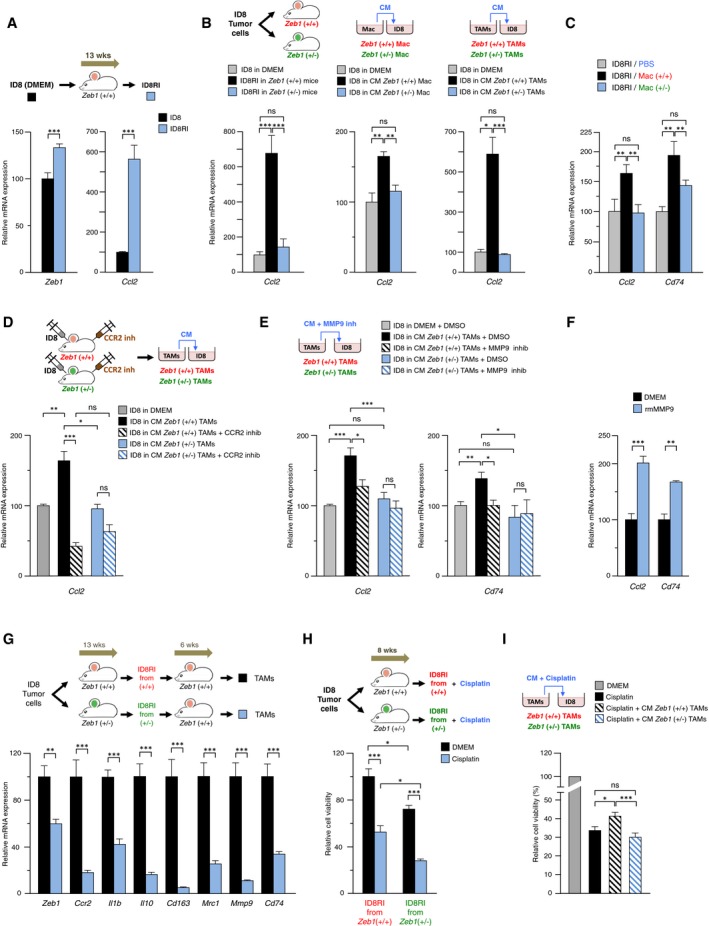Figure 4. Expression of Zeb1 by TAMs activates a Ccr2‐Mmp9‐Ccl2 loop between TAMs and cancer cells and increases the resistance of cancer cells to chemotherapy drugs.

- ID8RI cells express higher levels of Zeb1 and Ccl2 than parental ID8 cells. ID8 cells maintained in complete medium (referred here as DMEM) and ID8RI cells isolated from 13 weeks wild‐type ID8 tumor‐bearing mice were assessed for gene expression by qRT–PCR. Data represent the mean with standard errors from at least three replicates for each condition.
- Macrophages require full levels of Zeb1 expression to induce Ccl2 in cancer cells. Ccl2 was examined by qRT–PCR in ID8RI cells isolated from the peritoneal cavity of wild‐type and Zeb1 (+/−) mice 13 weeks after injection (left panel), ID8 cells cultured in vitro (DMEM) or co‐cultured with conditioned medium (CM) from either peritoneal macrophages (central panel), or TAMs (right panel) isolated from mice of both genotypes. Data represent the mean with standard errors from at least three replicates for each condition.
- Adoptive transferred TAMs require full levels of Zeb1 expression to induce Ccl2 and Cd74 in cancer cells. ID8RI cells isolated from the experiment in Fig 3G were assessed for Ccl2 and Cd74 by qRT–PCR. Data represent the mean with standard errors from at least three replicates for each condition.
- Blocking of CCL2‐CCR2 signaling in TAMs inhibited Ccl2 in cancer cells. ID8 tumor‐bearing wild‐type and Zeb1 (+/−) mice were injected with a CCR2 antagonist. The CM produced by their respective TAMs was added to ID8‐luc cells and their expression of Ccl2 assessed by qRT–PCR. Data represent the mean with standard errors from at least six mice for each genotype.
- MMP9 from wild‐type TAMs, but not from Zeb1 (+/−) TAMs, upregulated Ccl2 and Cd74 in cancer cells. ID8 cells were incubated with CM from TAMs of both genotypes in the presence or absence of a MMP9 inhibitor. Data represent the mean with standard errors from at least three replicates for each condition.
- Recombinant mouse MMP9 (rmMMP9) upregulated Ccl2 and Cd74 in ID8‐luc cells. Data represent the mean with standard errors from at least three replicates for each condition.
- The undifferentiated phenotype in cancer cells induced by wild‐type TAM, but not by Zeb1 (+/−) TAMs, (Fig 3E) promotes, in turn, a pro‐tumor phenotype in TAMs. First, mice from both genotypes were injected with ID8‐luc cells. After 13 weeks, mice were sacrificed and sorted tumor cells were re‐injected (ID8RI cells) into wild‐type mouse recipients. After 6 weeks, mice were euthanized and TAMs were isolated and analyzed for gene expression by qRT–PCR. Six wild‐type were randomly divided in two cohorts, half were injected with ID8RI cells from wild‐type mice and half from ID8RI cells from Zeb1 (+/−) mice.
- Expression of Zeb1 in TAMs determines increased resistance of cancer cells to chemotherapy. Wild‐type and Zeb1 (+/−) mice were injected with ID8‐luc cells during 8 weeks. Mice were then euthanized and their ID8RI cells cultured in the absence (referred as DMEM) or presence of 50 μg/ml of cisplatin. Cell viability was assessed by an MTT assay. Data represent the mean with standard errors from at three replicates.
- ID8 cells were cultured in the absence (DMEM) or presence of 50 μg/ml of cisplatin and incubated with CM derived from wild‐type and Zeb1 (+/−) TAMs. Data represent the mean with standard errors from at three replicates.
